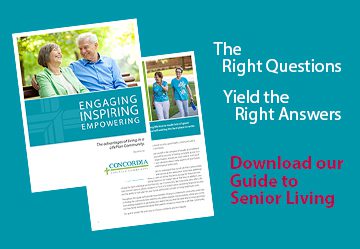Gift Annuity
What is a Charitable Gift Annuity and how does a Gift Annuity work?
A Gift Annuity is a contract between a trusted Foundation and the donor. The donor transfers property (cash or publicly traded securities) to the Foundation and the Foundation promises to pay the annuity for one life or two lives. A Gift Annuity may be established with as little as $5,000. Many people choose to use low yield stock because a Gift Annuity often pays more. The amount of the Gift Annuity payment is determined when the gift is established, based on the amount of the gift and the age of the annuitants. After the death of the annuitant(s), the remainder of the gift is given to the donor-designated charity or Concordia Life Plan Community.
Example: Jim, 80, and his wife Kathleen, 75, want a Gift Annuity to provide them with regular payments and a way to support Concordia Life Plan Community after the Lord calls them home. They establish a Gift Annuity by sending a check for $5,000 to a trusted Foundation to establish their Gift Annuity.
Based on their ages, they know they will receive a Gift Annuity rate of 6.6 percent. That means they will receive annual annuity payments of $330 for their lifetimes. Since a portion of the Gift Annuity is a charitable contribution, the couple also gets an additional $1965 income tax deduction for the year they established the gift. And, they enjoy even more tax savings. A little more than half of their annual $330 payment, $204, is tax free.
After Jim’s death, Kathleen will continue to receive her regular payments. After her death, the remaining balance on the couple’s Gift Annuity will go to Concordia Life Plan Community.
In general, annuity payments and the amount that eventually goes to the designated charity are based on life expectancy. If the Lord calls Jim and Kathleen home at the age of their life expectancy, about half of the couple’s original $5000 goes to their designated charity. If they die before their life expectancy age, a larger amount goes to the charity. If they live beyond their life expectancy, the charity receives less.

